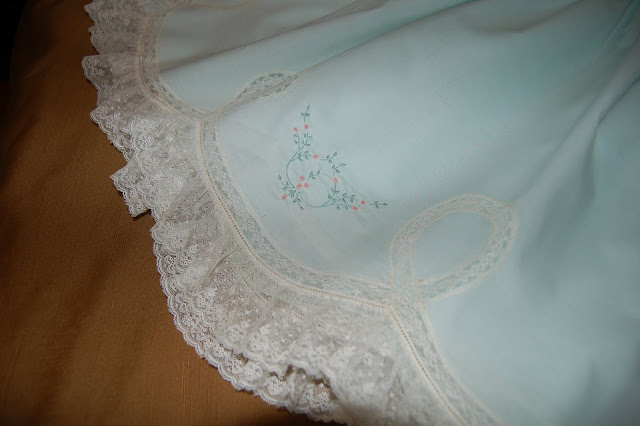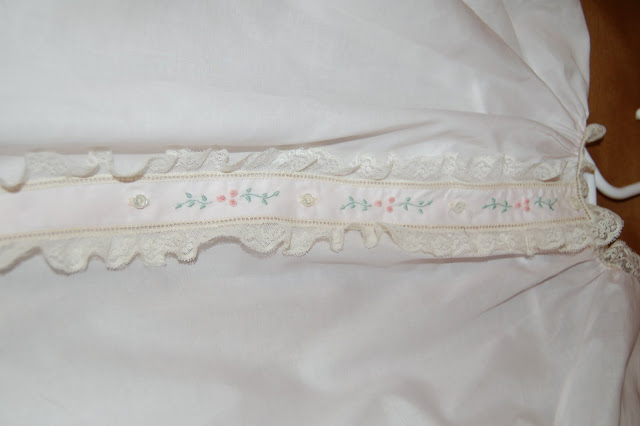These blankets can be ordered on-line, just google "hemstitched baby blanket". As you crochet, trim off the raw edge to within 1/4 inch of hemstitching. I usually trim off only 10-12 inches at a time, because the flannel fabric does unravel easily. Use a size 8 pearl cotton thread. You will need two skeins of thread per blanket.
Instructions for the Shell-stitched Crochet Edge:
First Round: Begining in one corner, with slip stitched ring on hook, put needle through one hole of hemstitch, yarn over and pull through hole leaving loop on hook. Yarn over and pull thread through both loops on needle. Single crochet completed. Complete a single crochet in each hole of hemstitching around perimeter of blanket. Once around, slip stitch with first single crochet to complete round.
Second Round: Chain one. Double crochet in third single crochet of previous round. *Chain one. Double crochet in same single crochet as previous double crochet. Repeat three times. (Double - chain - double - chain - double - chain - double - chain - double all in same single crochet from previous round). Skip two single crochets from previous round and single crochet in next single crochet of previous round. Shell stitch is now complete. Repeat shell stitch around perimeter of the blanket and slip stitch with first chain of first shell stitch to complete round. Hint: You may have to adjust the number of skipped single crochets of previous round to complete repeat of the design.
These flannel blankets are so soft and only get softer with washing. They are light weight and wonderful on warm days. I always carried one with me to cover myself while nursing. If you have any questions, please feel free to ask. I will be glad to help in any way I can.
Embroidery: Featherstitched bow (blue, floche #775), bouillon rosebuds (dark pink, floche #776, and light pink, floche #819), and green stems and leaves (green, floche #369)

























